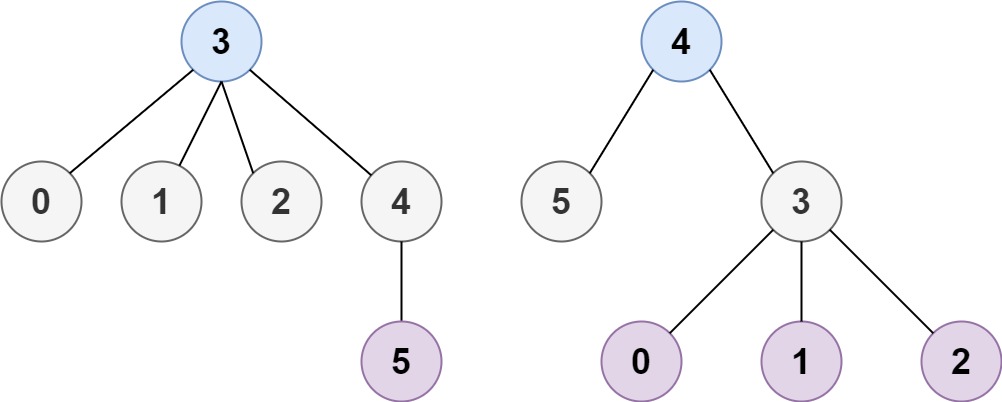
g0301_0400.s0310_minimum_height_trees.Solution Maven / Gradle / Ivy
Go to download
Show more of this group Show more artifacts with this name
Show all versions of leetcode-in-java21 Show documentation
Show all versions of leetcode-in-java21 Show documentation
Java-based LeetCode algorithm problem solutions, regularly updated
package g0301_0400.s0310_minimum_height_trees;
// #Medium #Depth_First_Search #Breadth_First_Search #Graph #Topological_Sort
// #2022_07_07_Time_25_ms_(93.99%)_Space_72.4_MB_(71.31%)
import java.util.ArrayList;
import java.util.LinkedList;
import java.util.List;
import java.util.Queue;
/**
* 310 - Minimum Height Trees\.
*
* Medium
*
* A tree is an undirected graph in which any two vertices are connected by _exactly_ one path. In other words, any connected graph without simple cycles is a tree.
*
* Given a tree of `n` nodes labelled from `0` to `n - 1`, and an array of `n - 1` `edges` where edges[i] = [ai, bi] indicates that there is an undirected edge between the two nodes ai and bi in the tree, you can choose any node of the tree as the root. When you select a node `x` as the root, the result tree has height `h`. Among all possible rooted trees, those with minimum height (i.e. `min(h)`) are called **minimum height trees** (MHTs).
*
* Return _a list of all **MHTs'** root labels_. You can return the answer in **any order**.
*
* The **height** of a rooted tree is the number of edges on the longest downward path between the root and a leaf.
*
* **Example 1:**
*
* 
*
* **Input:** n = 4, edges = \[\[1,0],[1,2],[1,3]]
*
* **Output:** [1]
*
* **Explanation:** As shown, the height of the tree is 1 when the root is the node with label 1 which is the only MHT.
*
* **Example 2:**
*
* 
*
* **Input:** n = 6, edges = \[\[3,0],[3,1],[3,2],[3,4],[5,4]]
*
* **Output:** [3,4]
*
* **Constraints:**
*
* * 1 <= n <= 2 * 104
* * `edges.length == n - 1`
* * 0 <= ai, bi < n
* * ai != bi
* * All the pairs (ai, bi) are distinct.
* * The given input is **guaranteed** to be a tree and there will be **no repeated** edges.
**/
@SuppressWarnings("unchecked")
public class Solution {
public List findMinHeightTrees(int n, int[][] edges) {
List answer = new ArrayList<>();
if (n == 1) {
answer.add(0);
return answer;
}
List[] graph = new ArrayList[n];
int[] degree = new int[n];
for (int i = 0; i < n; i++) {
graph[i] = new ArrayList<>();
}
for (int[] edge : edges) {
graph[edge[0]].add(edge[1]);
graph[edge[1]].add(edge[0]);
degree[edge[0]]++;
degree[edge[1]]++;
}
Queue leaf = new LinkedList<>();
int remainingNodes = n;
for (int i = 0; i < n; i++) {
if (degree[i] == 1) {
leaf.add(i);
}
}
while (!leaf.isEmpty()) {
// We found answer if queue left with <=2 elements
if (remainingNodes <= 2) {
break;
}
int size = leaf.size();
while (--size >= 0) {
int l = leaf.poll();
remainingNodes--;
for (int adj : graph[l]) {
// edge is removed so degree will decrease for both vertex
degree[adj]--;
if (degree[adj] == 1) {
leaf.add(adj);
}
}
}
}
answer.addAll(leaf);
return answer;
}
}
© 2015 - 2025 Weber Informatics LLC | Privacy Policy